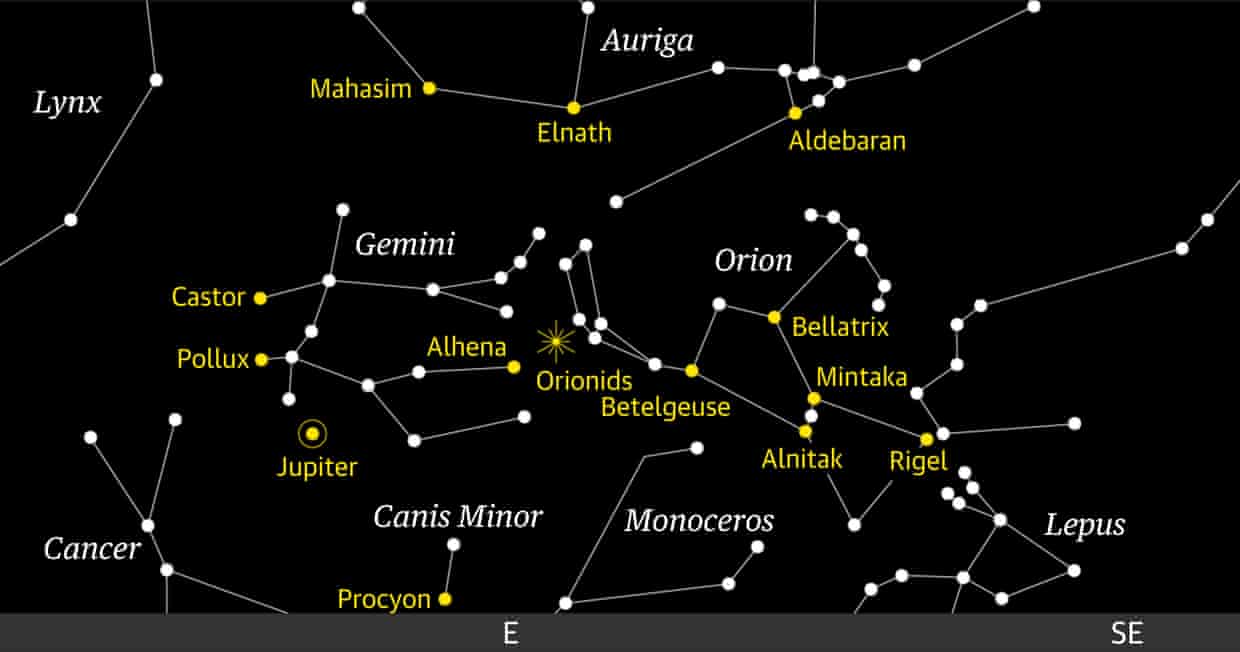Science
Orionids Meteor Shower Set to Dazzle Skywatchers on October 22

The Orionids meteor shower will peak on the night of October 22, 2023, providing a spectacular celestial display for skywatchers across the globe. Known for their swift and bright meteors, the Orionids travel into the atmosphere at an impressive speed of approximately 66 km/s, leaving behind dazzling streaks of light that can linger for moments after passing.
Unlike the earlier Draconids, which are characterized by their slow movement, the Orionids promise a more dynamic viewing experience. Typically, observers can expect to see around 20 meteors per hour, with some of these being spectacular fireballs that light up the night sky. These meteors originate from the debris left by Halley’s Comet, making the shower a fascinating event for both amateur and seasoned astronomers alike.
Viewing Conditions for the Orionids
This year’s conditions for observing the Orionids are relatively favorable. The moon will be a waning crescent, illuminating about 30% of its surface, and rising in the early morning hours. This means that skywatchers will enjoy several hours of uninterrupted viewing before the moon rises at 03:00 BST.
From the northern hemisphere, the constellation Orion will begin to rise just before midnight, climbing higher as the night progresses. For those in the southern hemisphere, Orion will appear even higher in the sky, potentially offering clearer views of the meteor shower.
The combination of a dark sky and the high visibility of the Orionids makes this event a must-see for those interested in astronomy or simply looking for a stunning natural spectacle. Observers are encouraged to find a dark location away from city lights to maximize their experience.
As the night approaches, prepare to gaze eastward, where the Orionids will be most visible. This meteor shower not only offers a chance to witness nature’s beauty but also serves as a reminder of the wonders of the universe. For those who miss the show on October 22, the Orionids will continue to be visible for several days following their peak, allowing for additional opportunities to catch a glimpse of these celestial marvels.
-

 Politics4 weeks ago
Politics4 weeks agoSecwepemc First Nation Seeks Aboriginal Title Over Kamloops Area
-

 World5 months ago
World5 months agoScientists Unearth Ancient Antarctic Ice to Unlock Climate Secrets
-

 Entertainment5 months ago
Entertainment5 months agoTrump and McCormick to Announce $70 Billion Energy Investments
-

 Science5 months ago
Science5 months agoFour Astronauts Return to Earth After International Space Station Mission
-

 Lifestyle5 months ago
Lifestyle5 months agoTransLink Launches Food Truck Program to Boost Revenue in Vancouver
-

 Technology3 months ago
Technology3 months agoApple Notes Enhances Functionality with Markdown Support in macOS 26
-

 Lifestyle3 months ago
Lifestyle3 months agoManitoba’s Burger Champion Shines Again Amid Dining Innovations
-

 Top Stories2 months ago
Top Stories2 months agoUrgent Update: Fatal Crash on Highway 99 Claims Life of Pitt Meadows Man
-

 Politics4 months ago
Politics4 months agoUkrainian Tennis Star Elina Svitolina Faces Death Threats Online
-

 Sports5 months ago
Sports5 months agoSearch Underway for Missing Hunter Amid Hokkaido Bear Emergency
-

 Politics5 months ago
Politics5 months agoCarney Engages First Nations Leaders at Development Law Summit
-

 Technology5 months ago
Technology5 months agoFrosthaven Launches Early Access on July 31, 2025





















